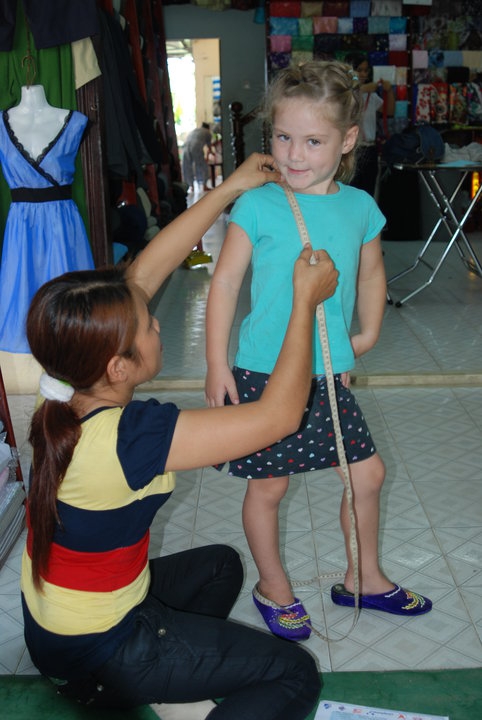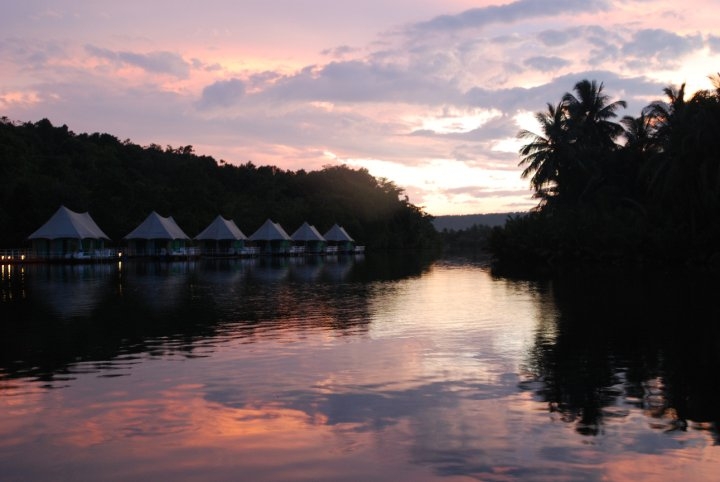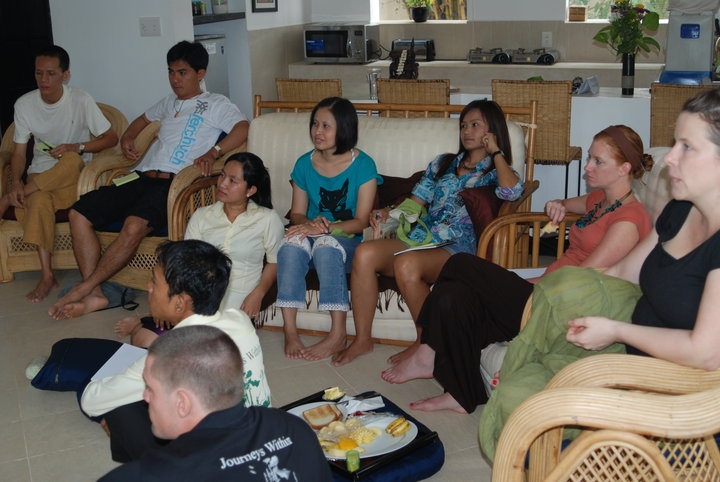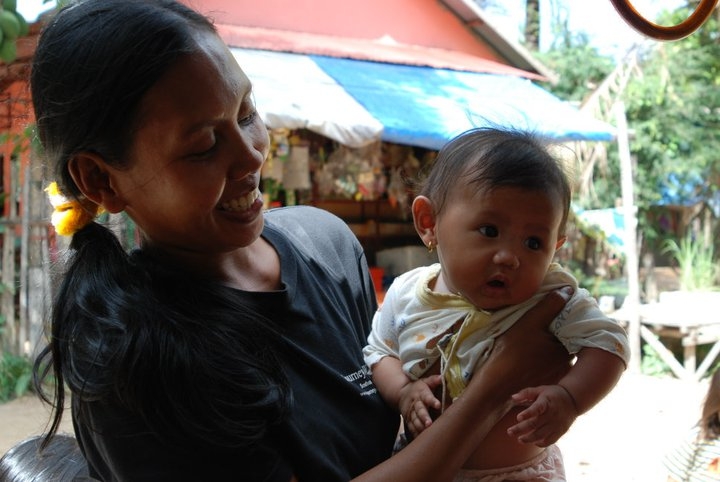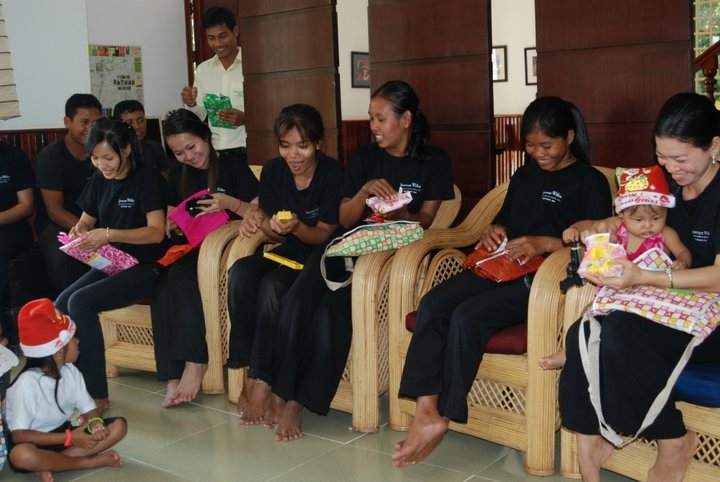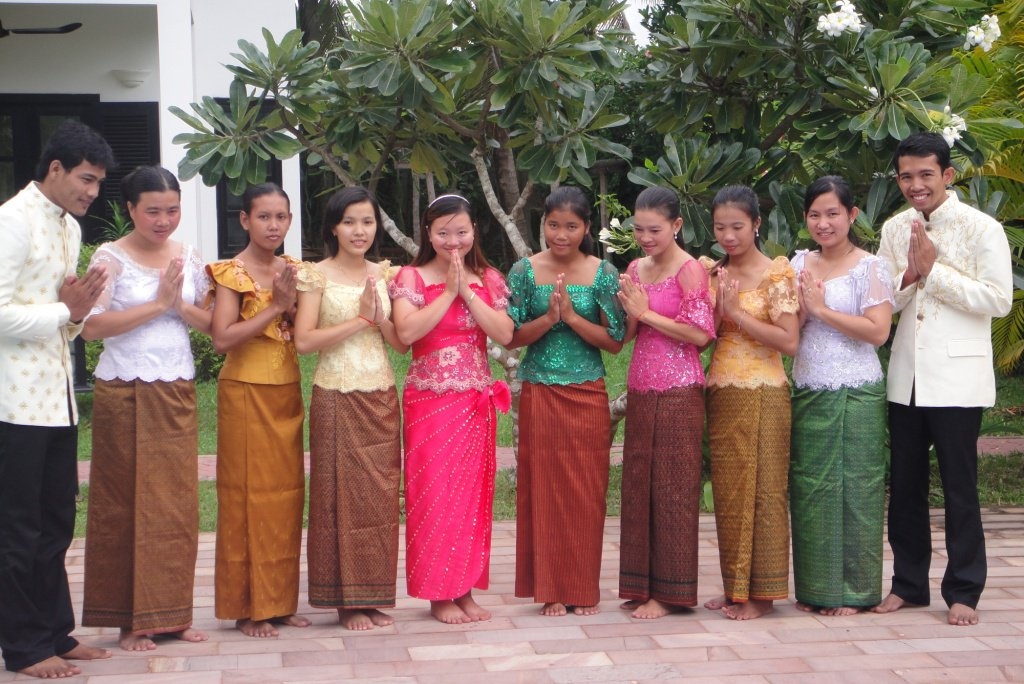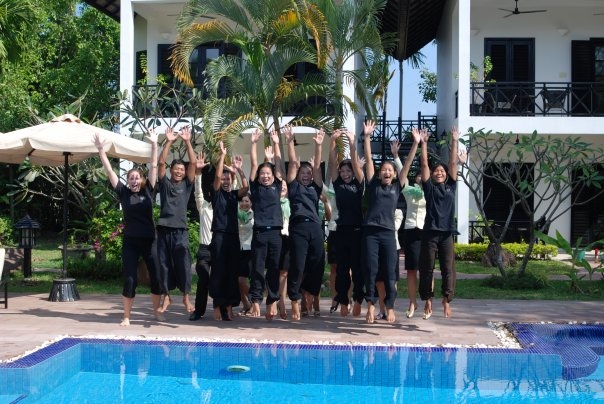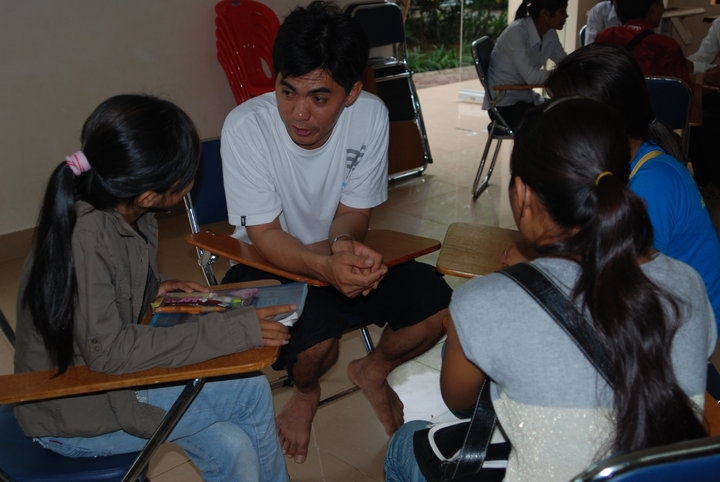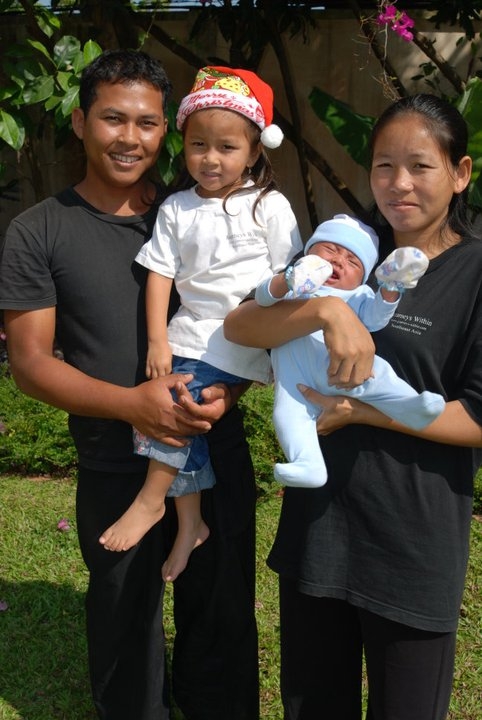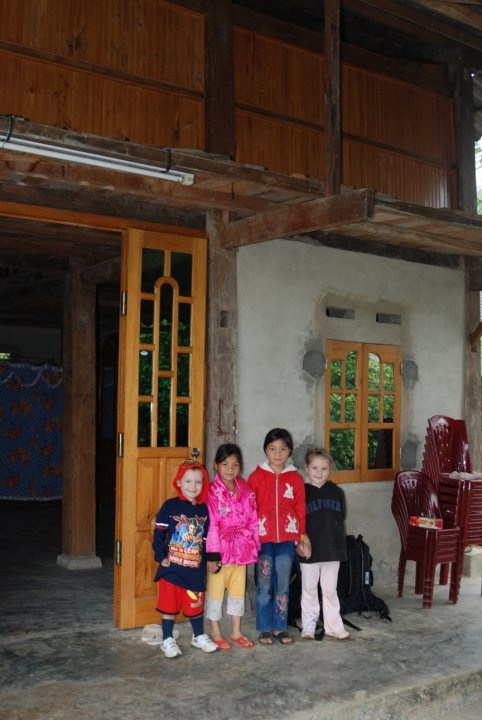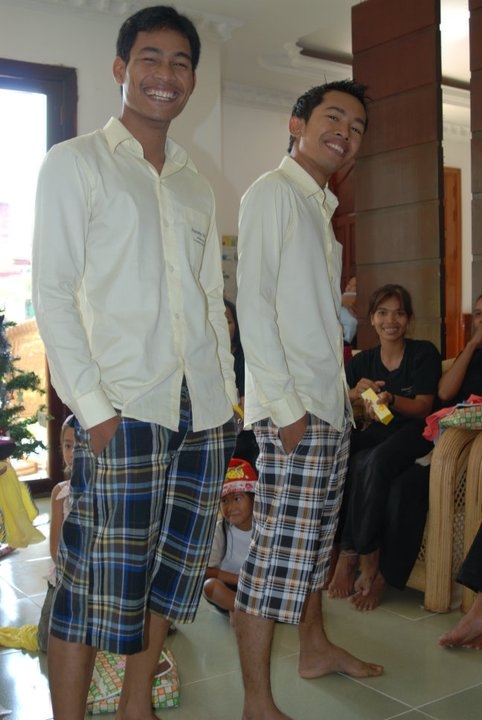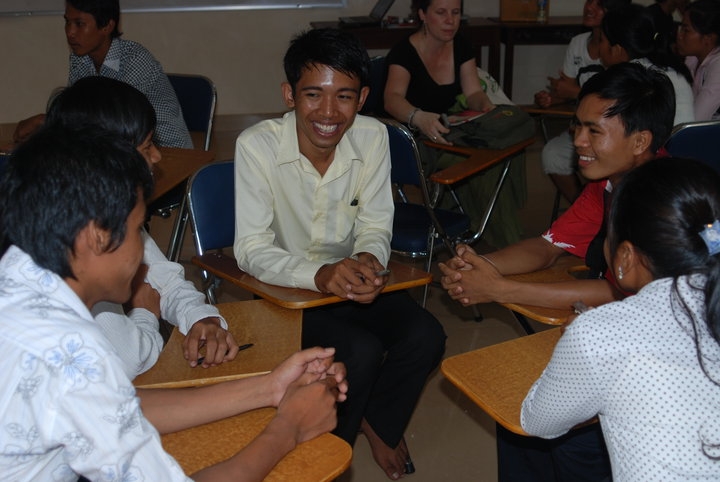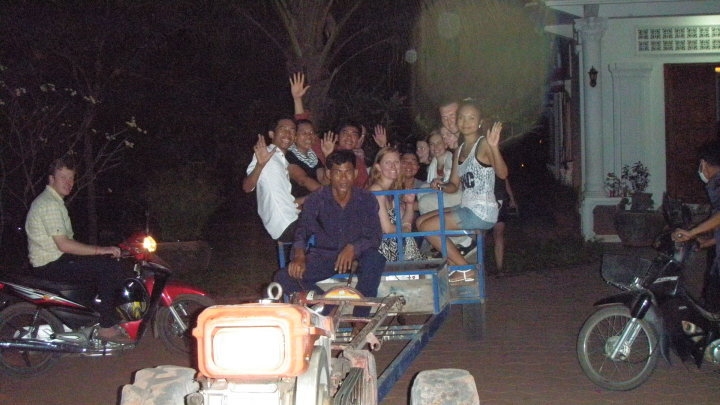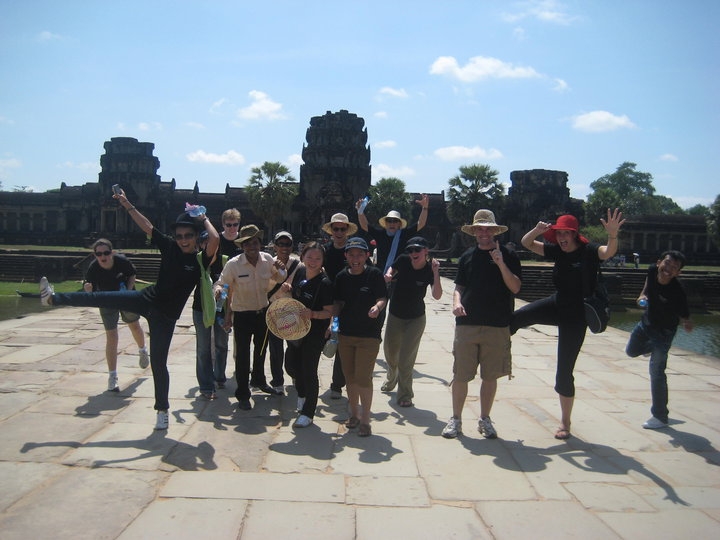
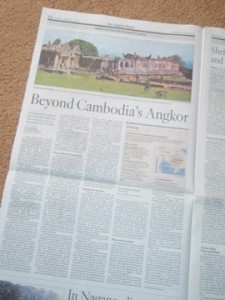
Seven years ago the LA Times contacted me about a press release I had sent out about a new tour we were running. They interviewed me and we chatted about Cambodia and Southeast Asia and our life here. As you can imagine, I was beyond excited! Then they did the background check and the next email I got was that they wouldn’t be able to feature us because we were, “too new a company” and “lacked credibility”. Disappointed doesn’t even cover how I felt!
But life has a funny way of making wrongs, right and last October the LA Times asked if we could organize a trip for Susan Spano, a beautiful travel writer and frequent contributor to the LA Times. We put together an amazing trip where she met a Tuol Sleng survivor, visited Pol Pot’s grave, saw Preah Vihear and the front lines and visited my favorite temples Koh Ker.
This Sunday it has all come full circle and Susan’t beautiful piece ran in the LA Times. Susan did Cambodia proud, her description of the country, the people and her experience really shows the essence of Cambodia. Journeys Within is mentioned as the tour company she used and we got top placing when listing how a reader could make this trip possible for themselves.
I’m not gonna lie, I cried. I am so proud of Journeys Within, of our guides, drivers and our team around the world and yes, it feels pretty good to be credible!

Beyond Angkor, Cambodia, a Khmer kingdom emerges from the jungle
Near Siem Reap, Cambodia, the Khmer Empire’s monuments are revealing their secret hideaways in the jungle as land mines are being cleared and roads are being built to get to them.
By Susan Spano, Special to the Los Angeles TimesMarch 6, 2011
Reporting from Siem Reap, Cambodia —
When French travel writer Pierre Loti took an ox cart to Angkor shortly after Westerners rediscovered it in the 19th century, he found creeper-choked ruins and the profound silence of the Cambodian jungle. Siem Reap, population 100,000, now at its threshold, has scores of fancy resort hotels, a pub street, a new branch of the national museum and an international airport where millions of tourists arrive every year to see the fabled temples of Angkor.
The Khmer Empire, which ruled much of Southeast Asia from 800 to 1400, built monuments all over Cambodia, but the rigors of getting to them, many in rough territory ringed by land mines left after Cambodia’s long civil war, kept many travelers away.
The situation has changed. In some areas mine clearing has been completed, and with Cambodia at peace, the government has launched a road-building campaign, bringing long-lost Khmer sites beyond Angkor within reach of travelers who dream of encounters with Cambodia’s ancient wonders à la Loti.
In the fall I made a long-anticipated first visit to Angkor. It was the beginning of a three-day itinerary that took me deep into the countryside northeast of Siem Reap to see three untrammeled Khmer monuments still locked in the solitude of the jungle.
Journeys Within, a small tour company with a bed-and-breakfast inn just outside Siem Reap, arranged my trip. I traveled in a van driven by trusty So Sopheap, who gave me a cool cloth from an ice chest at every stop, with Kham Sina as my wise and gentle guide.
The first day we followed a parade of Korean tourists in motorcycle taxis to Angkor. The region where Khmer rulers chiefly settled is now a 150-square-mile archaeological park with scores of temples, royal cities and reservoirs built about the time European stonemasons laid the foundations of Notre Dame de Paris and Chartres.
We visited only the best known, beginning with magisterial Angkor Wat, the apex of classical Khmer art and architecture built in the mid-12th century by the slave armies of Suryavarman II. Surrounded by a rectangle of long corbel-arched galleries, the temple rises in three astounding tiers to a cluster of five beehive-shaped towers, or prasats.
Sina and I inspected the carved stone reliefs in the galleries celebrating Suryavarman’s military exploits; stopped at shrines to Buddhist gods that succeeded the Hindu divinities originally housed in the temple compound; and climbed a hair-raisingly steep flight of steps to the great central prasat 200 feet above the surrounding jungle.
Our next stop was Ta Prohm, once a Khmer monastery that has been left unrestored, dilapidated and overgrown, making it a favorite with bus tours, shutterbugs and location scouts for movies such as “Lara Croft: Tomb Raider.” Sina and I then went on to mighty Angkor Thom, a walled and moated royal city built about 1200 by Khmer King Jayavarman VII. It has a bridge guarded by Buddhist devils; a pavilion flanked by a row of amiable stone elephants; and iconic Bayon Temple, where we took shelter from a downpour.
Thus introduced to Khmer history and art, we set out the next day for the countryside where 90% of the Cambodian people lived before communist Khmer Rouge insurgents turned rice paddies into battlefields and villages into work camps.
Since the rebels’ eradication in the late 1990s, the teak and tamarind forests that covered the northern plains have been cut down and the wood sold abroad or carved into smiling Buddha souvenirs. With the advent of paved roads, ox carts have yielded to rattletrap trucks, fueled by gasoline sold in Johnnie Walker whiskey bottles. Farmhouses built on stilts look desperately poor, but village markets overflow and the easy old rhythms of rural life seem to have returned.
Once you leave Siem Reap, however, tourist facilities are scant. We stopped the first night in the dusty town of Anlong Veng, which has a bare new hotel with double rooms for $15 a night. In the restaurant I met two intrepid American kings of the road, touring by motorcycle, and sampled such Cambodian dishes as beef in fermented fish paste, or prahok, but mostly filled up on rice. The guesthouse near the ruins of Koh Ker where we stayed the next night had no electricity after 10 p.m. or top sheets on the beds — and I met a frog in the bathroom.
I would have put up with much worse to see celebrated, embattled Preah Vihear, about 100 miles northeast of Angkor and built between 893 and 1200 at the edge of a cliff in the Dangrek Mountains. The temple is a national symbol, pictured on the 2,000-riel Cambodian bill, but the site is as much a bane as a glory, a natural stronghold that changed hands throughout the civil war, ending up in the hands of Khmer Rouge holdouts who finally surrendered in 1998.
Now the temple is at the center of an ongoing dispute over the country’s northern border. A map drawn in the early 20th century put it in Thailand, but for complicated legal reasons the International Court of Justice gave it to Cambodia in 1962. Tension between the two age-old enemies simmered until 2008, when UNESCO granted Cambodia’s application to put Preah Vihear on the World Heritage List. Cambodian and Thai troops fought near the temple, then dug in, skirmishing intermittently in 2009, 2010 and early this year. (A cease-fire has been in effect since Feb. 5, and Journeys Within has kept Preah Vihear on itineraries, though travelers are advised to be sensitive to changing conditions at the remote temple.)
Journeys Within assured me that the situation was calm, with Thai troops biding their time in a pagoda across the valley while Cambodian workers build a road up the mountain for tourists. The ascent through military checkpoints and muddy construction sites was more bracing than the war zone I found on top. I even got a tour of the military encampments around the temple where Cambodian soldiers lived with their families, grew vegetables and raised chickens. At Bee’s Nest camp I joined a group of Cambodians at a picnic table and asked whether they ever saw any Thais.
The leader patted the shoulder of the man next to him and said, “Yes, here’s one.”
Everyone laughed. The leaky border is an open secret, as is the widely shared belief that the dispute is as wasteful as it is ridiculous.
The sanctuaries of Preah Vihear sit on a mountaintop perch along a 2,600-foot chain of walkways and staircases. Sina let me stop often to catch my breath and survey the unrestored site; it barely resembles the picture on the bill. Deep crevices have formed between the gigantic boulders paving its boulevards; the keystones of arches lie scattered in the grass, their carved reliefs worn almost blank; whole sanctuary walls tilt precariously against the slim supports erected to stay them.
Still, orange-robed Buddhist monks glide through galleries, light incense in roofless shrines and picnic on the precipice where Preah Vihear’s climb up the mountain comes to a halt.
Looking over the plain below, I remembered Sina had told me that his father was one of the thousands of Cambodians who died trying to escape to Thailand during the genocidal regime of the Khmer Rouge. Others made it across the northern border to refugee camps. But in 1979 the frustrated Thai government sent about 42,000 refugees back to Preah Vihear and down the cliff where I stood, in a perilous forced descent that took the lives of an estimated 3,000 Cambodians.
It is easy for the country’s recent past to eclipse its ancient history, about which much less is known. Koh Ker, the site we visited next about 50 miles south of Preah Vihear, is a mystery, a royal city built around a reservoir and briefly the Khmer capital under King Jayavarman IV. His reasons for abandoning the old capital are obscure, and shortly after his death in 941, his son returned to Angkor, leaving Koh Ker to disappear into the jungle.
Workers for the Cambodia Mine Action Centre told us there are still unrecovered explosives around Koh Ker. While studying a Sanskrit inscription on the lintel of a small temple near the entrance, Sina found a snake skin, which he said means good luck, and Ta Kok, the site’s head of security, said all land mines immediately around the temples had been removed.
We met Ta Kok — who earned the nickname “Magic Man” by dodging bullets during the civil war — at a noodle shop inside the Koh Ker complex where his wife was preparing lunch — 47 frogs caught that morning in three traps. From there, we picked our way around fallen roofs and walls to Prasat Thom, a seven-tiered Khmer pyramid that would fit in at Chichén Itzá. The cordoned-off steps to the top and recently mowed lawn were the only indications that anyone had been there in ages.
Our last stop was at Beng Melea, a temple built by Suryavarman II in the same style as Angkor Wat. Apart from a wooden walkway constructed when the compound opened to visitors in 2003, it has been left as it was found, a dreamy Khmer ruin fighting a losing battle with tree roots and strangler figs.
We were alone, except for several children for whom the temple is a backyard playground. One of them, a nimble boy unaccountably garbed in a plastic shower cap, led us off the boardwalk for a closer look into dark galleries and chambers. A small Suryavarman, but no less lord of an empire like nothing else in the world — as Loti put it, “the conception of a race apart, which gave a bright flash of light in this corner of the world, and then disappeared never to return.”
If you go
THE BEST WAY TO SIEM REAP, CAMBODIA
From LAX, Asiana Airlines, Korean Airways and China Southern Airlines offer connecting service (change of plane) to Siem Reap. Restricted round-trip fares begin at $1,553.
WHAT TO DO
Journeys Within Tour Co.; (877) 454-3672 http://archive.journeys-within.com headquartered in Siem Reap with an excellent B&B. Can arrange trips to Angkor and outlying temples.
The Happy Ranch Horse Farm,http://www.thehappyranch.com, offers trail rides into the countryside around Siem Reap.
Quad Adventure, http://www.quad-adventure-cambodia.com, specializes in all-terrain-vehicle tours around Siem Reap; one-day trips start at about $200.
TO LEARN MORE
http://www.tourismcambodia.com,
http://www.guidetosiemreap.com
… Read more »






